How to Use Youtube to Grow Your Business?
18 years after its creation, Youtube is still one of the most popular video-sharing websites of all time. The site was created in 2005 by Steve Chen, Chad Hurley and Jawed Karim as a way for people to share their own home videos easily. Within a few months it was attracting over 25 million video views, and it was procured by the Google company just one year after its inception for 1.6 billion USD. In 2023, it was estimated that Youtube had over 2.7 billion unique monthly visitors, over 720,000 hours of video uploaded each day, and it was the second most popular platform for influencer marketing. (Source: Demand sage).
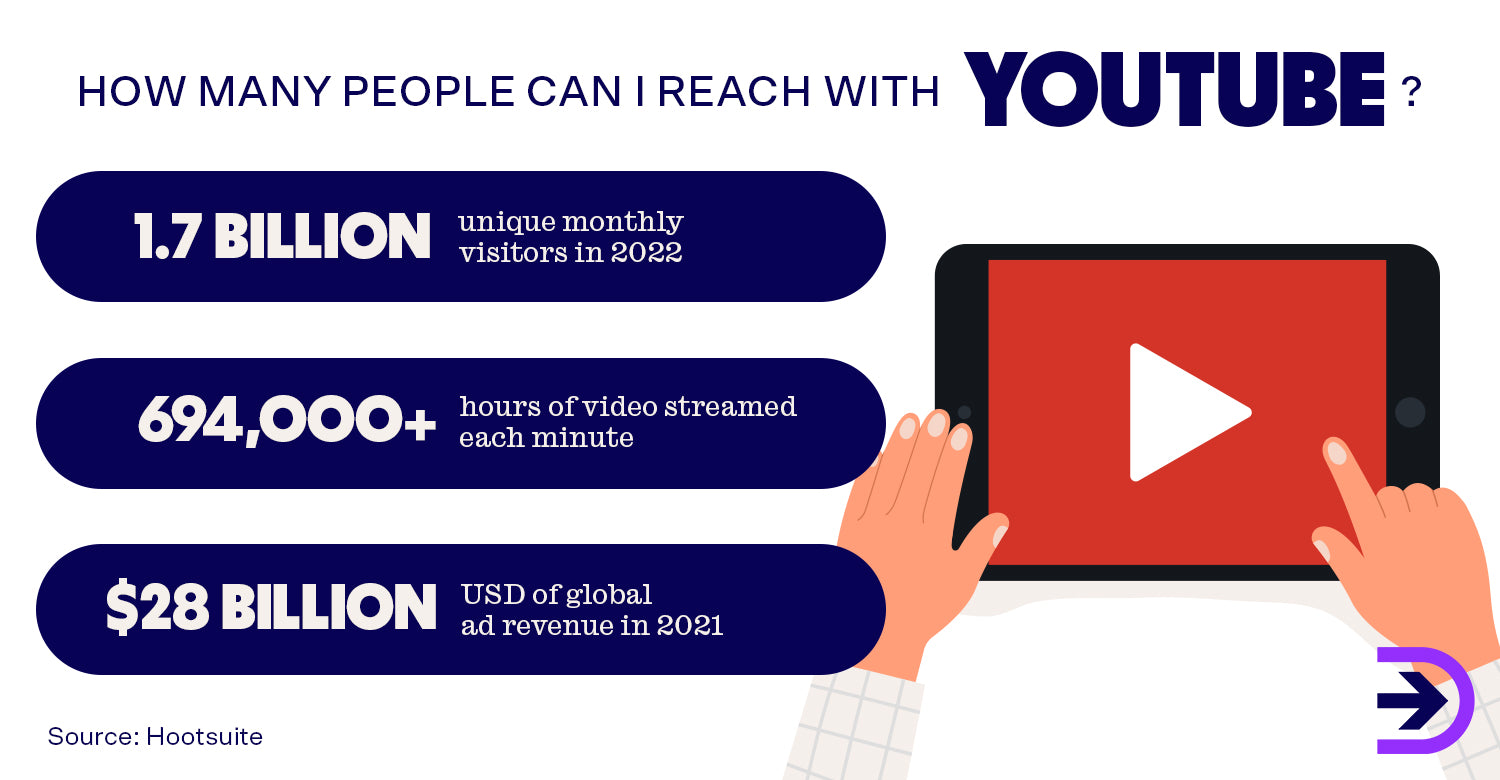
Despite being the second-most-visited website in the world, many businesses have ignored the platform in favour of other social media sites such as Facebook and Instagram. Get ahead of the competition and attract potential customers by making the most of every platform; read on to hear from the experts about why YouTube channels should be a part of your content strategy.
YouTube, The forgotten social channel
YouTube is a video-sharing service where users can upload, watch, like, share, comment and monetise self-made content. You can use YouTube for free, or subscribe to YouTube Premium for a monthly fee. Viewers can enjoy ad-free content that can be downloaded to their mobile devices for portable viewing, and creators can enjoy a second revenue stream as membership fees are distributed amongst creators based on members’ views.
Despite being overshadowed by short-form video giant Tiktok, Youtube is stronger than ever with a global user base of 2.5 billion people. This user base is made of roughly 56.66 per cent millennials and Gen Z (Source: Hubspot), 53.9 per cent males, 46.1 per cent females, and 22 per cent mobile users. 99 per cent of Youtube users are also on other social platforms, making cross-platform promotion an easy strategy for your business to increase engagement rates (Source: Hootsuite).
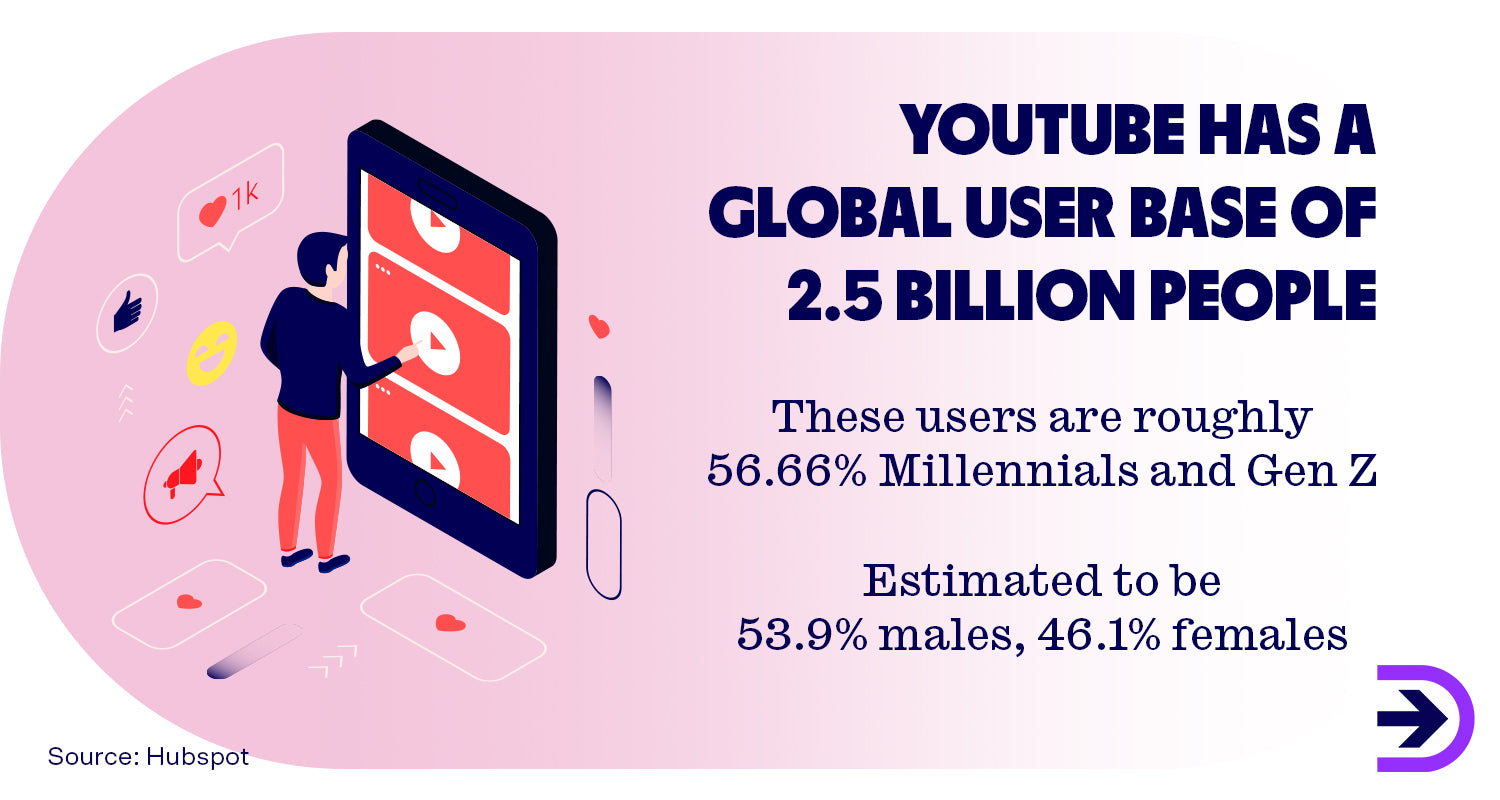
While Youtube user demographics tend to skew older, 96 per cent of Gen Z users have a Youtube account, with 82 per cent reporting they watch Youtube for nostalgia and 83 per cent reporting they use Youtube to find soothing content for relaxation (Source: Hubspot).
Youtube has several advantages over other video platforms. TikTok limits its videos to 10 minutes, while Instagram is limited to between 3 seconds and 60 minutes. Youtube has no time limit, allowing for better long-form content such as how-to videos, tutorials and other educational videos. You can also post Shorts and Stories to target the short-form crowds. The videos you post will be on the site indefinitely so you can continue to reap benefits after your campaign is over. Finally, it has multiple options to generate revenue, from direct sponsorships to advertisements via its partnership program.
Organic growth via YouTube
Organic growth is growth a company achieves through internal processes. These could be through new marketing campaigns, products, improved resource allocation, or optimised practices. You can achieve high organic growth with YouTube by creating videos, gaining subscribers and attracting views. Views are one of the main influences on the YouTube algorithm and are an important part of spreading global brand awareness, measuring ROIs, and potentially creating an additional income stream.
The keys to a successful YouTube presence are consistency, relevance and community engagement. You should have a consistent, dedicated, sustainable content schedule to keep subscribers coming back for more. You should be using relevant keywords in your video description and metadata, and keeping on top of the latest trends in both the zeitgeist and your niche market. Use eye-catching thumbnails and titles. Finally, you need a great social media presence where you can respond to comments and messages as well as promote your videos.
YouTube Videos & content-type suggestions
Educational
This is one of the most popular categories on YouTube, with watch times of “study skills” videos increasing by more than 3x YOY.

Educational videos are valuable content made with the purpose of teaching your audience a concept or skill. They might also relay industry knowledge, current affairs, debunked myths, or other relevant information. You can upload educational videos in the form of presentations, lectures, infographic presentations, webinars and more. Explainer videos and tutorials/how-tos are a subset of educational videos.
This content is potentially evergreen, as it only dies when the information is debunked or out of date. A video titled “How to Choose Trending Products” is going to have a different lifespan to “The Top 5 Trending Products for 2024” or “The Latest Must-know Statistics for Trending Products”.
TED (Technology, Entertainment and Design) is an organisation that is most famous for its Ted Talks, educational seminars hosted by a wide range of experts in countless fields. You can find them on multiple channels, but they have an incredible stronghold on YouTube with 22.8M subscribers on the TED channel and 38.1M subscribers for TEDx. Some of the most popular videos of all time, such as “How great leaders inspire action” by Simon Sinek, are over a decade old.
Explainer video
Videos explaining a topic in easy-to-understand terms are a valuable commodity for consumers. Your topic could be related to your industry, your brand, or your products. You can use explainer videos to announce a rollout of new features and services. This genre is perfect for top-of-funnel content, but could even extend to after-purchase customer care.
This Shopify Explainer Video is a short piece that walks users through the basics of building a Shopify website. They don’t go in-depth on each topic, but links are provided in the description relating to each feature. From here, a consumer has a basic understanding of the features and benefits of using Shopify. Dollar Shave Club uses a comedic spin in their video “Our Blades Are F***ing Great” to explain to their consumers what the company does, why their product is unique and how they rank against their competitors, all while taking an amusing tour through a Dollar Shave Club warehouse.
Tutorials
How-to videos are the most popular type of educational content on YouTube, earning the most attention even compared to music or gaming. From makeup to furniture assembly, there is a tutorial for every kind of product, industry, and hobby.
Show your customers how to order, assemble, install or use your products. Offer tutorials aligned with your brand image - for example, a home decor company might make a how-to for making a throw pillow to go with their signature sofa. You can also make tutorials about industry-specific software, business strategies, or other topics you see your brand as a leading expert.
Learn With Shopify is an official channel that not only contains information about the Shopify platform but plenty of up-to-date tutorials and how-tos about starting your own ecommerce business, starting a brand, and building a Shopify store.
Community-based videos
This content comes from community engagement. You could invite your audience to submit clips, audio, stories or other ideas that become your next content piece. You can invite expert guests or even your community members for an interview. Use live streaming to encourage participation and networking. The key is to interact with the community you’re building to establish goodwill, reinforce your brand image, and establish a strong presence.
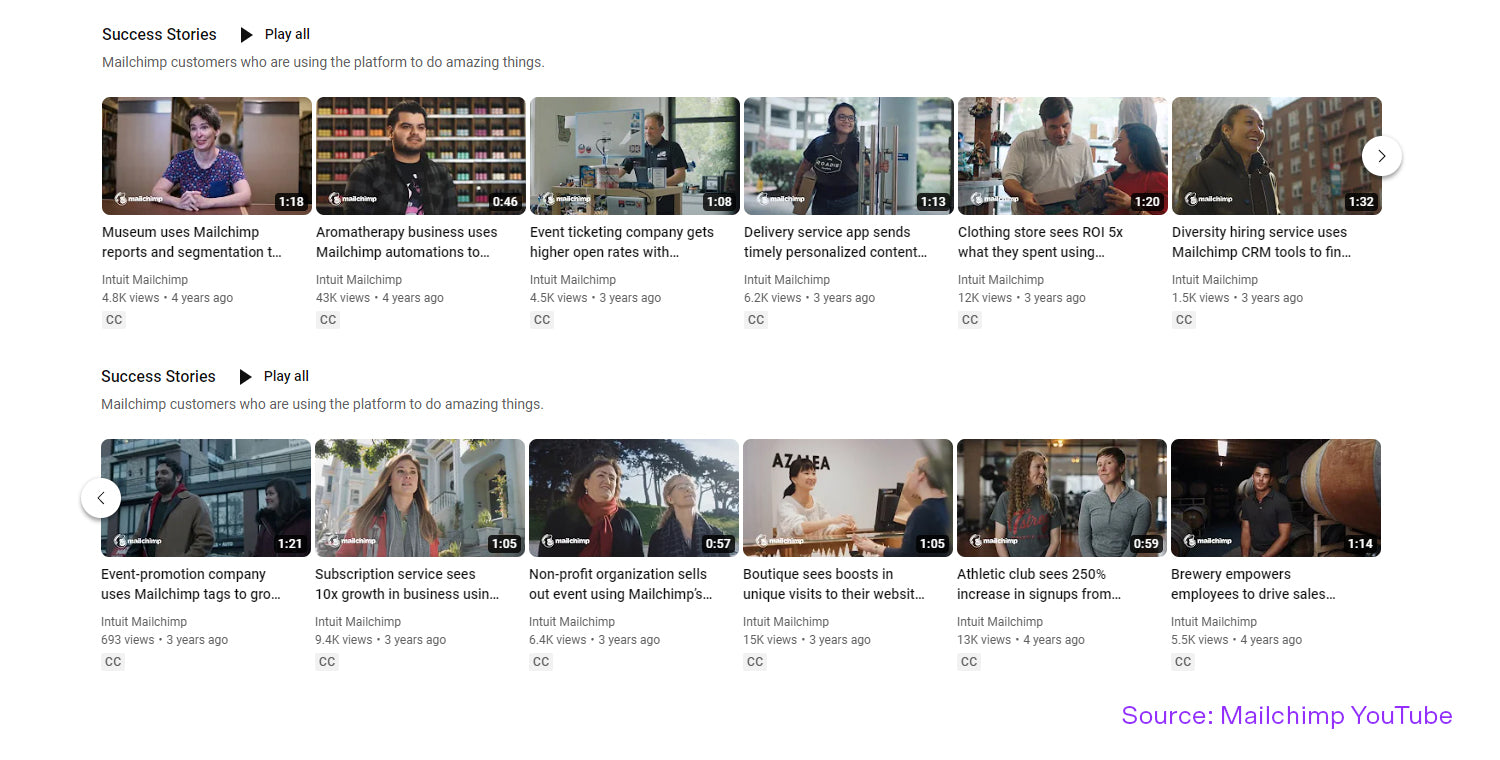
Comedy
If you were to write down the top ten marketing campaigns of all time, you’ll find most of them contain some form of humour, from lighthearted goofs to subtle digs at the competition. In a report released by Oracle, 91 per cent of participants preferred brands to be funny (up to 94 per cent for millennials and Gen Z), 72 per cent would choose a humorous brand over their competition, and 80 per cent are more likely to buy from them again. You could be 90 per cent more remembered than your competition by simply telling a joke.
Merkle’s 2020 video “When Marketing Misses the Point” highlights relatable pain points for consumers (annoying and inefficient marketing tactics). At the end of the video, they invite viewers to learn more by downloading their free 2020 Marketing Imperatives Booklet and opting into their mailing list or contacting them via links in the description.
Video podcasts
If you’re already putting out a podcast, you can turn one piece of content into two by filming and uploading episodes to YouTube. You can release the episode in full, in short clips, as a highlight reel, or more. Reach multiple audiences by meeting them where they are and providing them with their preferred content format in a single recording session.

Listicle
Listicles are short-form articles organised as a list. Most of us will have clicked on a listicle at some point while browsing, and that’s because they’re a very effective marketing tool. Listicles are usually short and easy to read, use snappy but uninformative titles to capture attention and compel readers to find out more and more the further they go.
Introductory videos
Whether this is your first marketing campaign ever or your first on YouTube, an introductory video is the perfect starting point. It can be a short, friendly introduction or an in-depth look into your business and history. Pin to the top of your channel so new viewers can learn more about you.
As part of our rebranding process, Dropshipzone has launched our very own YouTube channel. For our introductory video, we show an ideal world filled with business opportunities at every step of fulfilment and end on our new and improved motto: Make Ship Happen.
Behind the scenes (BTS)
These videos show a peek behind the brand curtain. You might use these videos to celebrate your workplace culture, show how your products are selected and handled, highlight some of your best team members, or prove how your business lives up to its brand messaging and image. Not only do these videos humanise your online business further, but consumers are more likely to trust brands that prioritise transparency and genuine communication.
Vlogs
Video logs (Vlogs) are casual, intimate videos that show an average day at your business. Vlogs don’t have to be completely polished, which makes them easy fillers for your content schedule. Like behind-the-scenes videos, they show the human side of your business and allow you to forge stronger connections with your target audience.
Challenge videos
Challenge videos are a great way to capitalise on an already trending topic and get your brand into the conversation. Just be careful to choose challenges that are relevant to your business or align with your brand goals and image.
In 2014, Florida Pro golfer Chris Kennedy poured a bucket of ice over his head and challenged others to do the same within 24 hours or donate $100 to the ALS Association. The “Ice Bucket Challenge” experienced instant virality, and the association raised $115 million over that summer, with $80 million going straight to research for amyotrophic lateral sclerosis.
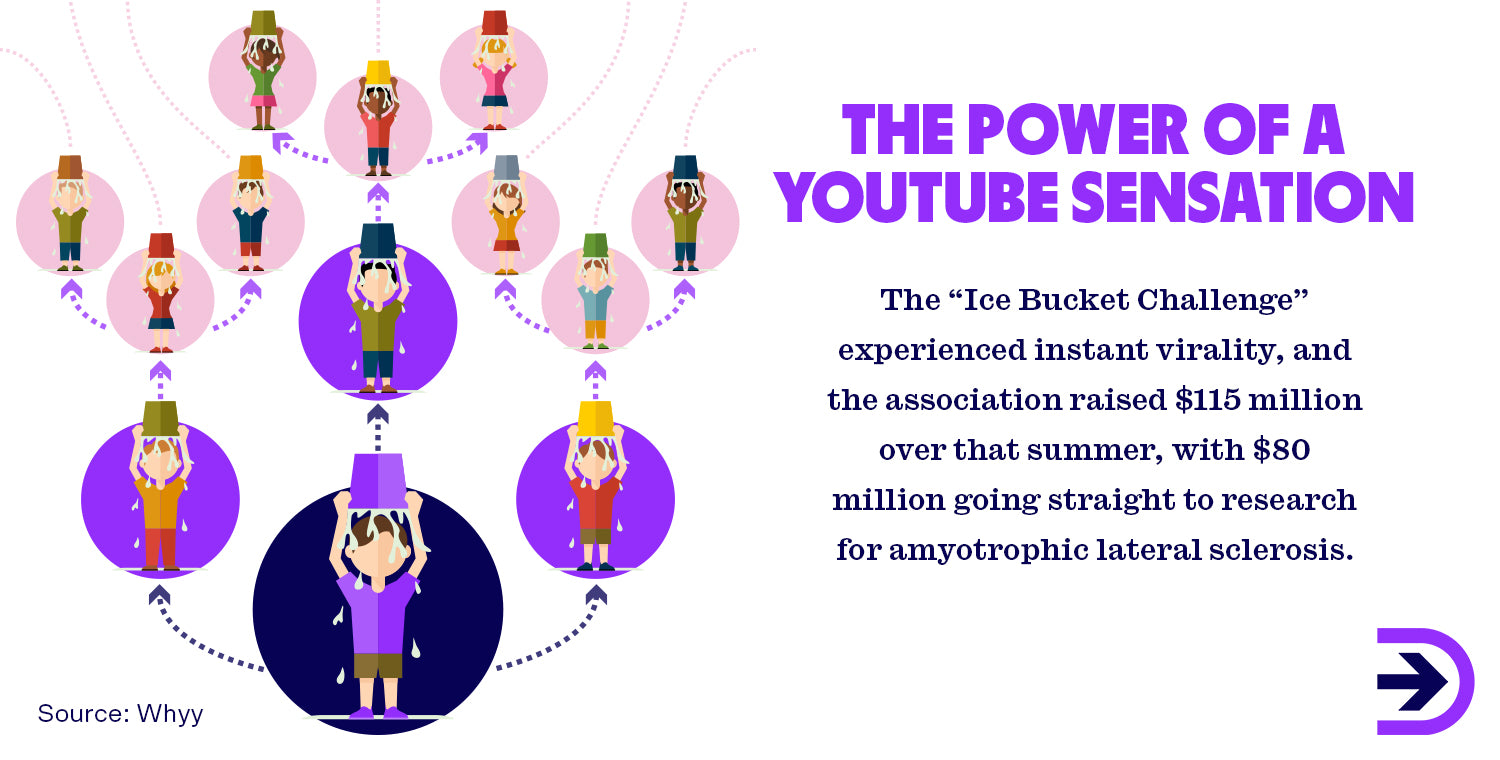
Q&A/AMA
Answer questions from the public about your products, services and brand. These can come in the form of a curated Question & Answer session where you collect questions from the audience, common Google searches or Frequently Asked Questions, or it can be an Ask Me Anything (AMA) where viewers ask questions live.
Products
What better way to advertise your new or winning products than with a video marketing campaign? Once you’ve posted your launch video across your socials, keep the momentum going with reviews, demonstrations, unboxing videos, live testimonials from real customers, and more. Don't forget to include a CTA that directs viewers to the product pages.
Cards
YouTube cards are interactive pictures that link to related video content, a landing page or your channel. You can use up to five cards per video.
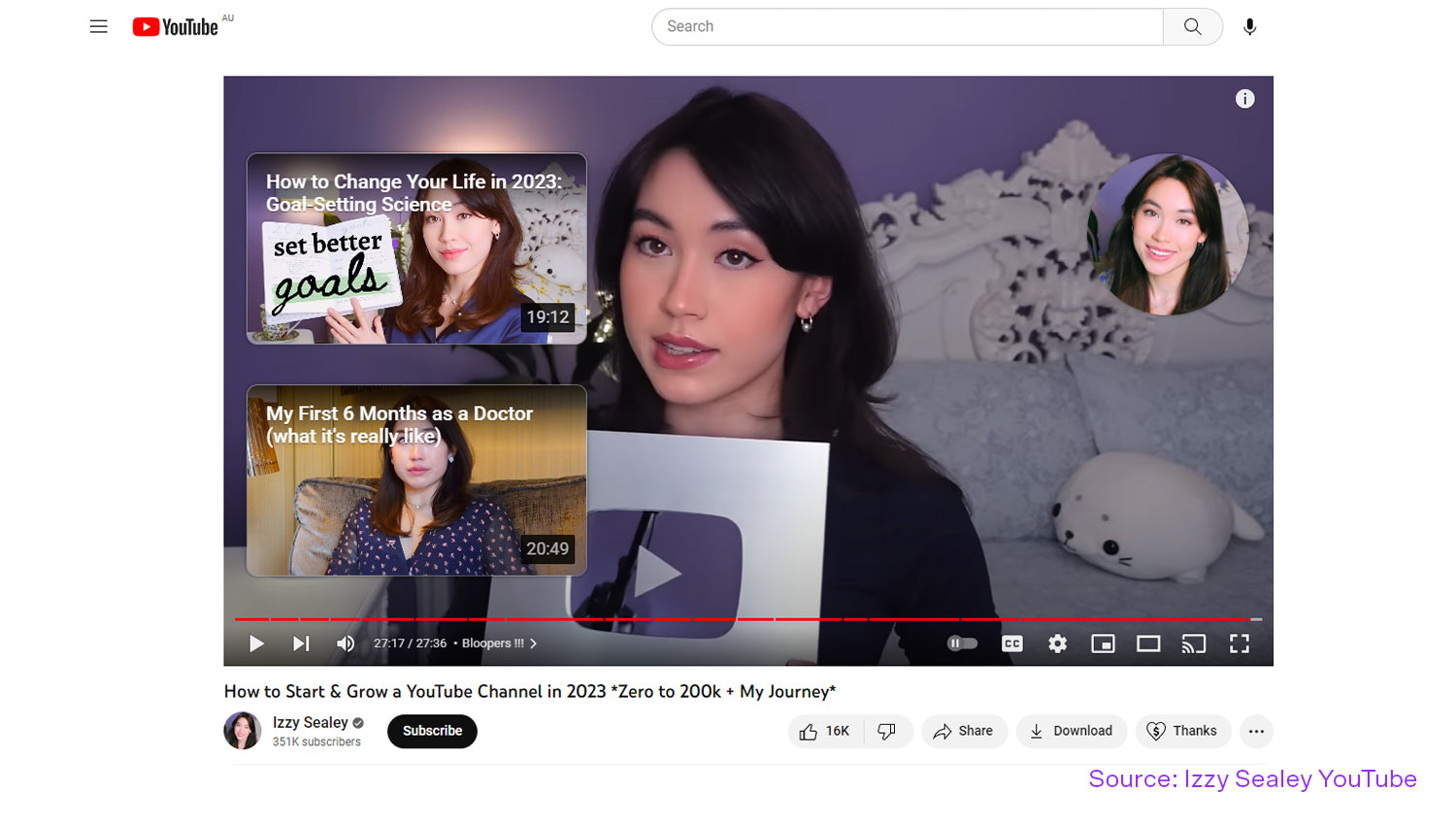
YouTube Shorts
Youtube Shorts were Youtube’s competitive response to Tiktok. Users can make vertical or square videos that are up to 60 seconds long. Creators can edit through the platform, respond to comments via new videos, and feature licensed music, other Youtube audio and captions. Users can endlessly scroll through Shorts on all devices.
Youtube markets its Shorts experience as a new way to reach audiences who may not have seen your content before. Additionally, they have tailored their notifications only to target users who regularly engage in Shorts. According to Youtube Help, Shorts have surpassed 6.5 billion daily views globally since their introduction.
Youtube Stories
Youtube Stories (formerly known as Reels) are short mobile-only videos that allow eligible creators to engage with their audience in a more casual, behind-the-scenes way. Youtube Stories differ from Instagram Stories and Facebook Reels in a variety of ways:
-
Youtube Stories are only available to creators with 10,000 or more subscribers.
-
You can create multiple stories with their own set of videos that go live one at a time.
-
Youtube Stories expire after 7 days.
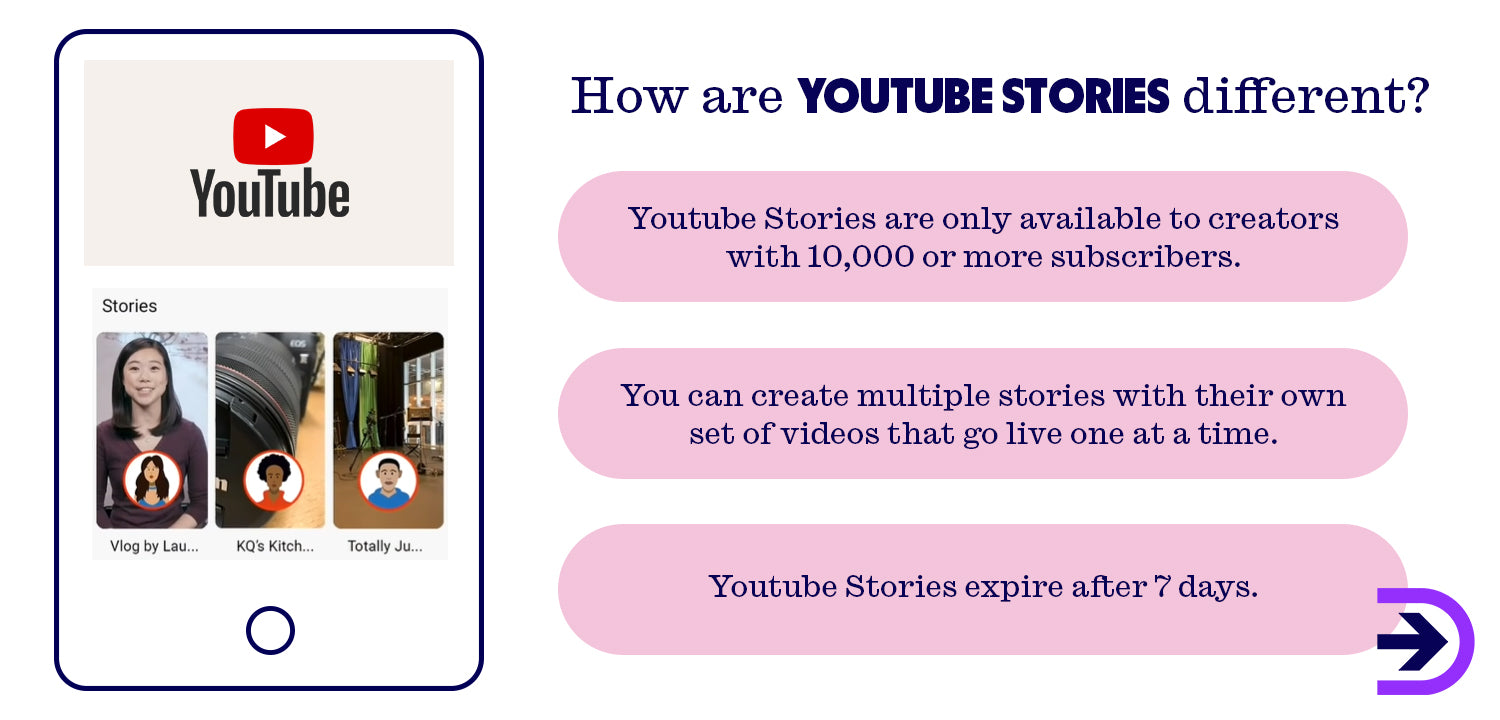
According to Youtube, creators with an active story can accelerate subscriber counts by 8.5 per cent. They present a great opportunity for brands to interact with their followers in a more intimate way and either engage a new audience or keep up with their loyal millennial/older followings.
Implementing YouTube SEO
The algorithm YouTube uses to recommend videos differs from its parent company Google. Both use authority and search query relevance as major factors, but where Google is about link building, YouTube is about engagement. These factors include watch time, likes, dislikes, comments and shares. YouTube SEO is as much about optimising content for your audience as it is about the algorithm.
Your first step is to do some video keyword research. Do a keyword search in Google and see what video results appear: you may find titles that include “how to”, “top ten” or “tutorial”. Next, optimise your video title, video description and file name to include your focus keywords. Don’t forget to use relevant tags so users can find your content - you can also categorise your videos after uploading under “advanced settings”. Outside of YouTube, don’t forget to link your videos and your channel in all your content, on all your available socials.
To increase engagement, up your production value within your budget. There are plenty of affordable production tools online to create videos, such as portable green screens, microphones and ring lights. Next, work on creating the perfect attention-grabbing thumbnails. Finally, although YouTube supports automatic captioning, you can get a boost by adding your own closed captions and subtitles. Not only are you making your video more accessible for the deaf and hard of hearing, but closed captions can be crawled by search engines.
Compared to Google SEO which is a long-term process that delivers results slowly, you can rise to a top rank on YouTube in a day and drop just as fast, which is why consistency of output is a key factor for success.
Partnerships with other channels
Join forces with other YouTubers, brands, creators and influencers for a collaborative media campaign. You might post a video to each other’s channels reviewing or promoting their product. Make a guest appearance in an interview, skit or game show. Discuss a mutually beneficial topic. With collaborations, you get double the audience exposure, double the likes, and significant popularity growth compared to non-collaborative channels.
When choosing the right YouTube partnership, make sure you’re choosing the right fit for your brand. Is this partnership relevant to your campaign goals? Do you share business values? Can you organically implement these products/services into your content? You’ll also want to check their social media profile. Does this content creator/influencer have enough subscribers to make a collaboration worthwhile? How engaged is their audience? Have they done collaborations in the past? Once you’re sure you’ve found the perfect match, you can start laying down the foundation for your exciting new partnership.

Growing your business with paid advertising on YouTube?
There are plenty of options when it comes to advertising on YouTube. In recent years, Google has made this even easier by offering targeted ads, upgrading its data attribution model, and preventing inappropriate videos from being monetised.
The different types of ads on YouTube
Skippable in-stream ads
These ads play before or during a video and feature a button allowing viewers to skip after 5 seconds. Skippable ads are 12 seconds to 6 minutes long, but advertisers only pay if viewers stay for at least 30 seconds, watch the whole video, or click on the relevant CTA. In the ad below, Canva has used overlay text to direct viewers to their website.

Non-skippable in-stream ads
These ads cannot be skipped and may play before, during or after the main video. They are 15-20 seconds in duration and will appear mid-roll in videos that are 10 minutes or longer. These ads are highlighted for viewers by yellow markers on the progress bar and a 5-second countdown before showing.
In-feed video ads
Ads that show up on the Youtube homepage, through search results, and in the sidebar of related videos on watch pages.
Bumper ads
The shortest type of YouTube ad, bumpers are only six seconds long, unskippable and appear before the main video. They are very effective when used thoughtfully and can be used to supplement larger campaigns.
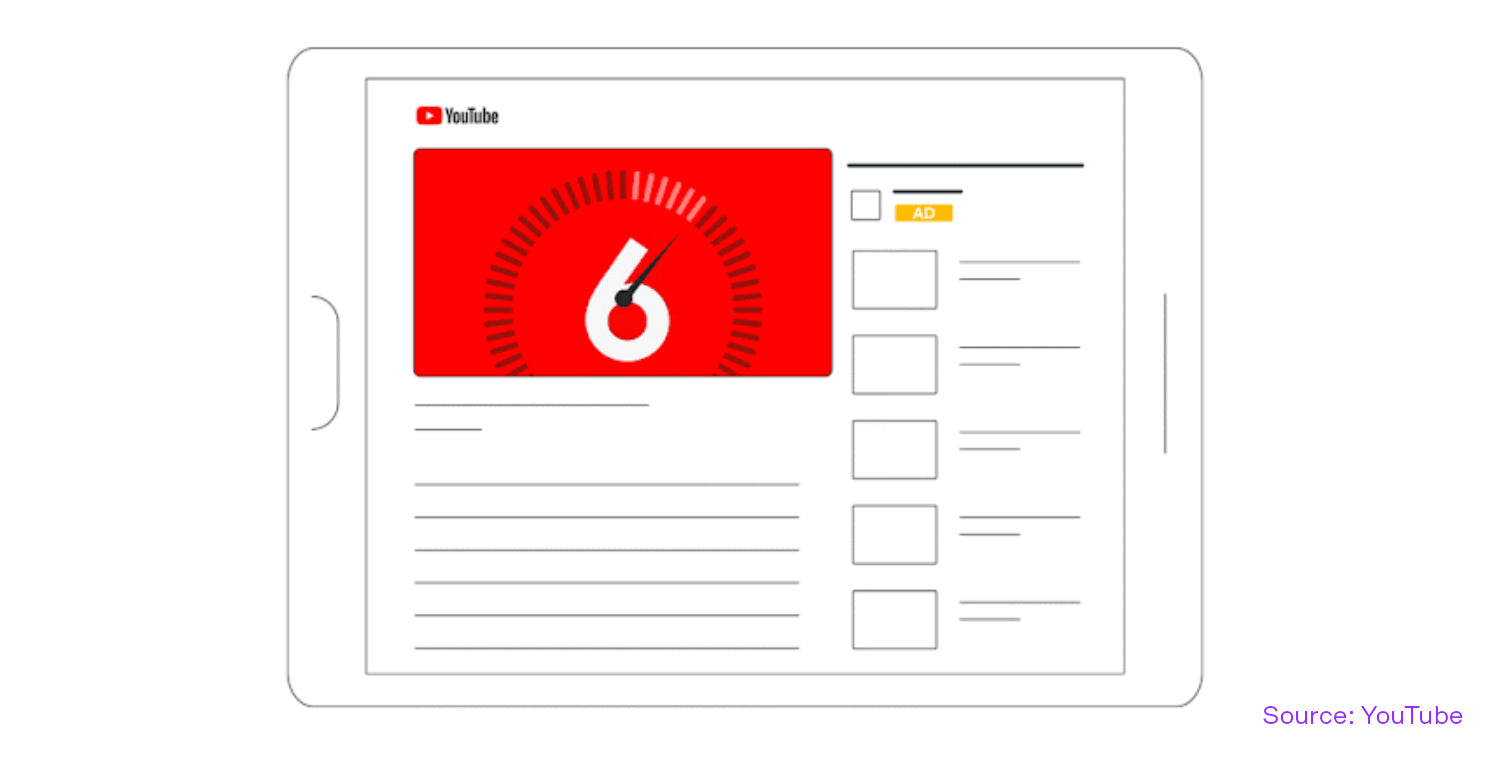
Overlay ads
Ads that appear as a banner at the bottom of a video, just above the progress bar. These ads are silent and unobtrusive, and direct viewers to product links, landing pages or other platforms.
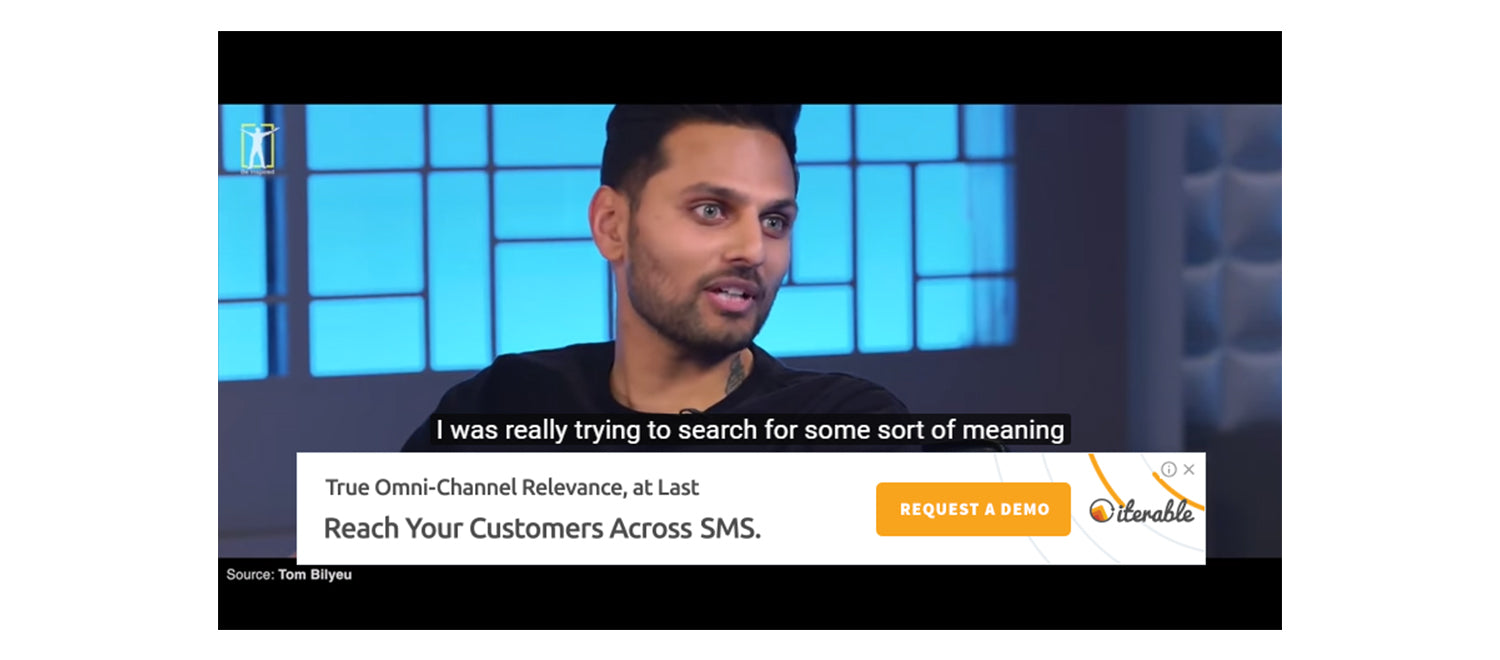
Masthead ads
A featured video will autoplay on mute at the top of the YouTube Home Feed, which when clicked will take viewers to the watch page for that video. On the desktop, the ad will include an info panel using assets from your channel and display a clickable video thumbnail after autoplay. On mobile, the Masthead ad features the channel name and icon, customisable headline, external CTA and video thumbnail. On televisions, viewers can interact with the ad using their remote controls, but the ad does not support external CTAs. This ad format is only available on a reservation basis.
Shorts ads
Ads on Shorts appear in video or image format between Shorts in the watch feed. They are immediately swipeable.
Which ad types are more cost-effective?
The cost of your YouTube ad campaign is measured in cost-per-thousand (CPM). The average advertising cost per view is $0.10-$0.30, and most businesses will pay a CPM of $4 to $10. You can set your own daily budget at any point to prevent overspending, making YouTube ads overall a safe and affordable investment. For more information, visit Google Ads Help to determine the right budget and bidding strategies for you.
Which ad format is most effective for your campaign will depend on a variety of factors, the most important being targeting, placement, length and CTA.
Targeting
YouTube has a variety of targeting options available to put your ad in front of the relevant consumer. You can target users based on demographics such as age, gender or household income, geographics, keywords, and even specific topics, interests or hobbies. For more information on how to target the right audience, you can visit our blog What is Market Segmentation?
Placement
Pre-roll ads are valuable because they are less intrusive than mid-rolls and may take advantage of the primacy effect. The most effective pre-roll ads are concise, targeted, creative, engaging, and include a compelling hook and CTA. The Geico Unskippable campaign is a great example of a self-aware ad campaign that is funny and memorable, while Burger King went one step further and created 64 unique pre-roll ads that were tailored to whatever their viewers were going to watch.
Despite being more intrusive, mid-roll ads have higher completion rates than both pre- and post-roll ads. This is because viewers are already invested in the video and will likely want to see it through, regardless of advertising. There is also the subset of viewers who multitask while watching YouTube, meaning they are less likely to skip an ad and simply leave it going in the background. The best mid-roll ads minimise intrusion and deliver the brand message early. Grammerly is a brand that understands effective mid-roll placement, positioning its ads in videos related to education, business and life hacks.
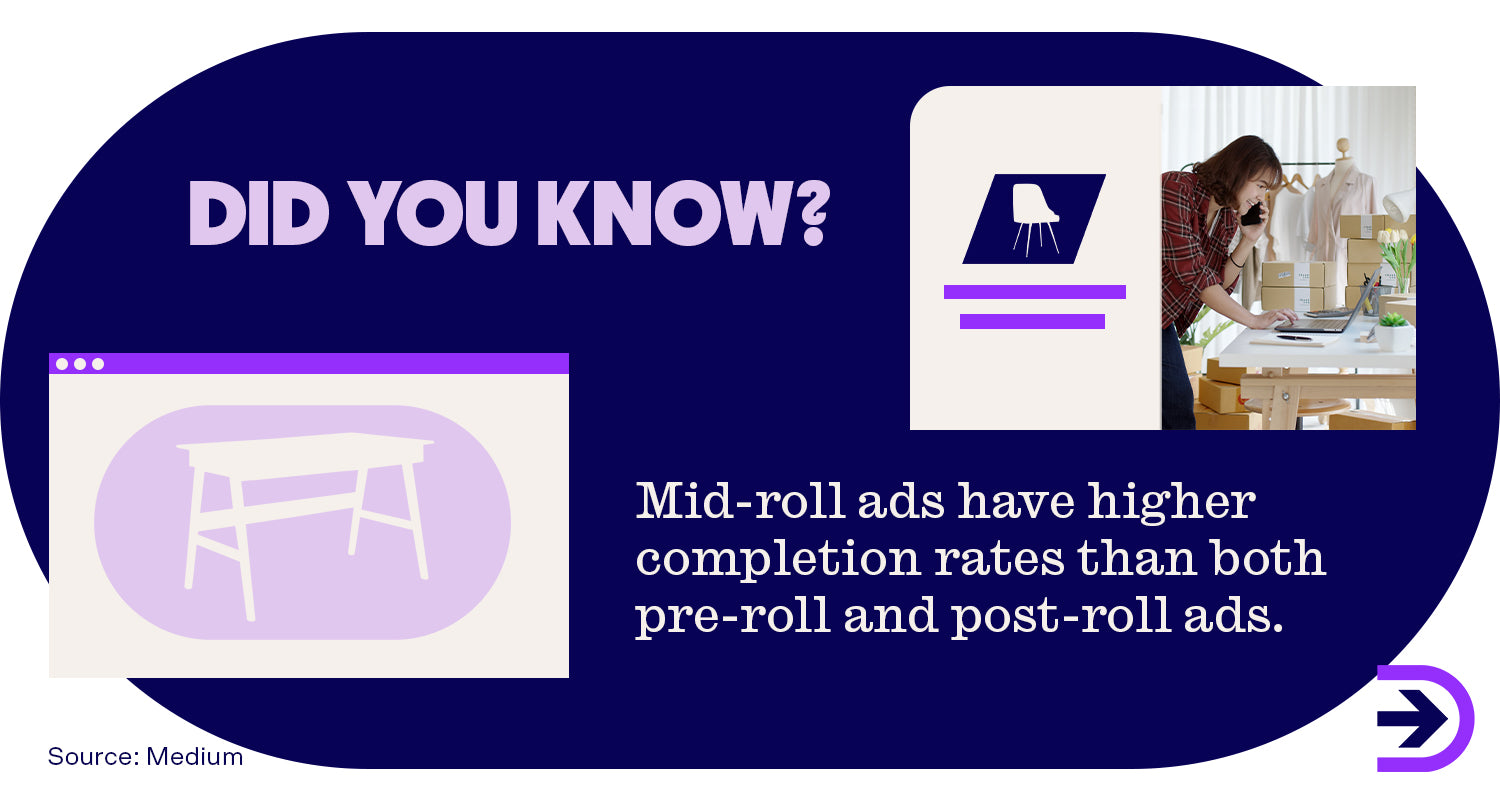
Post-roll ads have the least completion rates since viewers can just click off after their video. Post-roll placement is only a good investment as part of a larger strategy. The best post-roll ads are short, have a clear CTA, and tap into the viewer’s fear of missing out (FOMO).
Length
The most effective length for a YouTube ad is as long as you need it to be to properly execute your message/CTA, as long as it capture’s your audience’s attention within the first five seconds. If you need a jumping point, a common industry standard is 20 seconds. Experiment with different lengths using A/B testing to see what works with your viewers.
CTA
A clear call-to-action is important in all your content, as this is what moves consumers down the marketing funnel. On YouTube ads, you can add a call-to-action overlay: an interactive element that appears over an ad and leads to your website. You should also be using call-to-actions in your main content. You can ask viewers to like, subscribe and ring the notification bell to see when you post a new video. Direct your audience to click a link in your description to visit a customised landing page, contact form, newsletter or downloadable content. Encourage people to follow your other social media profiles by linking in the description and listing in the video.
Understanding your YouTube audience
Prior to starting your YouTube channel, you should engage in market research to determine what your consumer’s needs and preferences are, where they’re watching your content, what trends they are following, and what your competitors are doing. With this information, you should be able to outline an effective content marketing strategy. You can use a variety of tools for market research including Google Trends and Google Analytics.
Once you’re on YouTube, you can track and get to know your audience using YouTube Analytics. These reports are made of seven different tabs:
-
Overview: Shows basic data about your channel and video performance.
-
Content: A summary of the content your audience watches and how they get there.
-
Reach: Examines how your audience is discovering your channel.
-
Engagement: A summary of how your audience watches/likes your content.
-
Audience: Shows what kinds of viewers watch your content.
-
Revenue: Tracks earnings through the Youtube Partner Program.
-
Research: Insight into searches on YouTube.
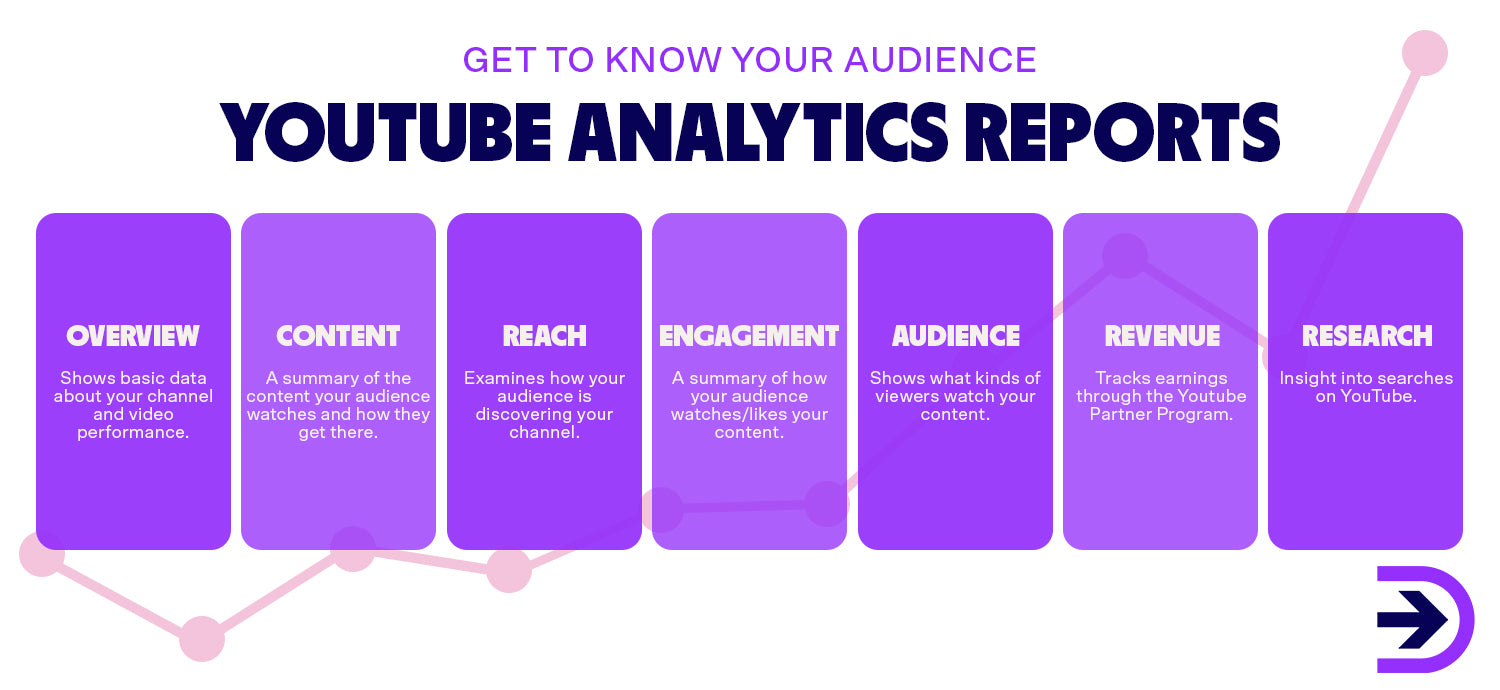
YouTube Analytics can show you data such as your top-performing content across a period, the number of impressions and how they led to watch time, key moments of audience retention, basic audience demographics, the content and channels your audience watches, and traffic sources (how viewers found your content or channel). With these figures at your disposal, you can create data-driven insights and solutions for your next digital marketing campaign.
Using YouTube to grow your dropshipping business in 2024: Does YouTube work for dropshippers?
Absolutely. Both suppliers and retailers can use YouTube to grow their dropshipping businesses, whether through valuable user-focused content or effective ad campaigns. You can become an expert in your field, a transparent brand that tells it like it is, or a comforting face that is friends and family-approved. With such a large user base and plenty of powerful tools to easily target and monitor the right audiences, you’re missing out on tons of high-value traffic if you don’t use YouTube as part of your digital marketing strategy.
For effective marketing with measurable results, there’s YouTube. For starting your dropshipping business strong with instant access to thousands of dropshipping products online and tailored customer service with zero hidden fees, there’s Dropshipzone. As Australia’s leading B2B2C platform, we provide you with an easy-to-use, low-cost turnkey solution to start your own online business or grow your existing online store with quality products, reliable couriers, low shipping costs and no inventory management. Get in touch with us today or sign up to start selling online - it’s completely free to join.
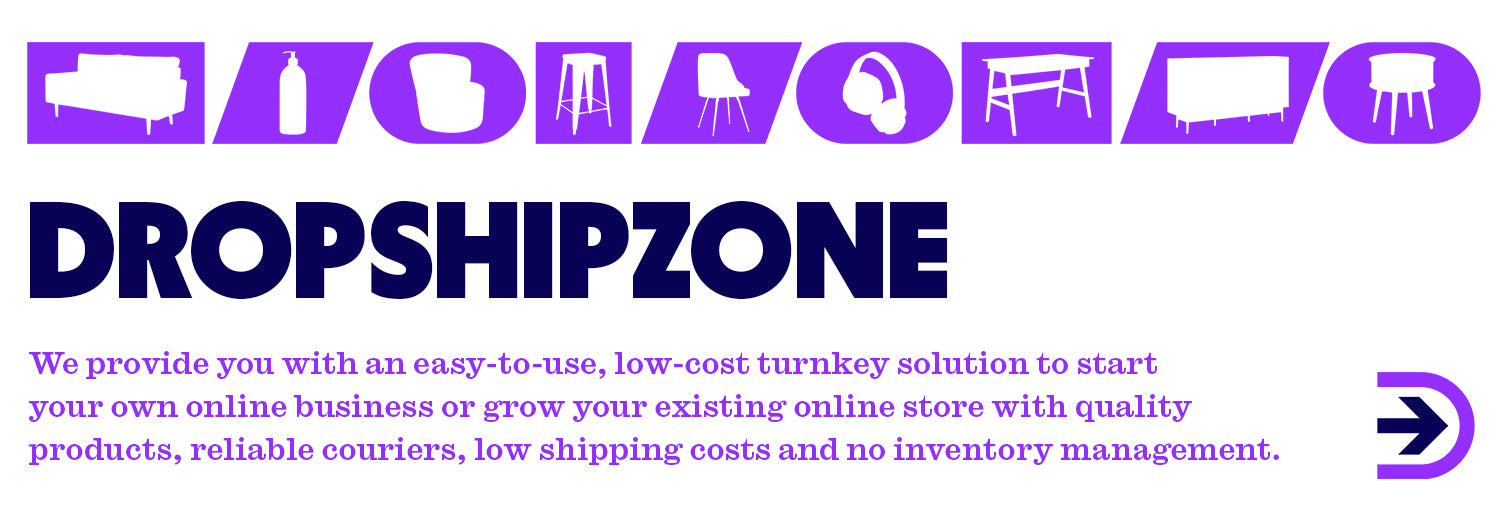
YouTube business growth FAQs
Is YouTube still a viable social media platform?
Despite the exponential growth of Instagram and Tiktok, YouTube is still the second-most-visited social media site on the internet today. An ideal video marketing strategy involves reusing and remixing content for multiple platforms, as 99 per cent of Youtube users are also on other social media platforms.
Is YouTube right for my business?
YouTube can be an incredibly effective marketing channel for ecommerce brands with any budget. They have many options for low-cost, low-risk investment and infinite possibilities for networking. However, creating YouTube content on a regular schedule requires time and money for equipment, recording and editing. You should consider whether your marketing efforts are better focused elsewhere before you hit record.
How much money do I need for a YouTube campaign?
You can set your own daily and cost-per-view budget as needed, but the average advertising cost per view is $0.10-$0.30, and most businesses will pay a CPM of $4 to $10. For more information, visit Google Ads Help.









